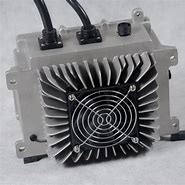Wow! It's hot outside - or at least usually in summer. As the temperature rises, anyone who owns an EV (or is curious about it) may be wondering: How does owning an EV differ from owning an Internal Combustion Engine (ICE) vehicle in the heat? This winter, we wrote about how cold weather affects charging and battery range. In warm weather, owning an electric car is slightly different than owning an internal combustion engine car, but not much.
Summer heat affects all cars, including those with internal combustion engines. When an internal combustion engine gets too hot, parts can expand and warp, oil can cook and lose effectiveness, and even the engine can get stuck. Thankfully, the engine cooling system with antifreeze does a great job of keeping the engine from overheating.
Likewise, electric vehicles have cooling systems to keep the batteries from overheating. The battery's thermal management system heats and cools the battery to keep it around 60-80 degrees Fahrenheit. This is very different from the engine cooling system, which mostly only cools to around 190-210 degrees Fahrenheit (combustion engines also produce a lot more waste heat than batteries!).

An EV battery performs best in a specific temperature range because its electricity is produced by chemical reactions that work best in that range. When it's hot outside, the thermal management system uses a small amount of power from the battery itself to maintain the temperature (when plugged in, the system draws some power from the grid to maintain the battery's temperature).
With all that said, here are some warm-weather tips to help you maximize your EV's range and keep your battery healthy throughout the summer.
5 warm-weather tips for electric vehicles:
1. Park your electric vehicle in the shade or in a garage (if available).
If you don't have access to a garage or shady parking lot at home, whenever you're out and about, and have the option of parking your car inside a parking structure or under the scorching sun, choose a parking structure! This will allow your battery and cabin to cool down when parked. You'll also use less battery power to cool your car when you get back in the car.
2. Precondition your EV before entering. (If inserted, keep it inserted while doing preprocessing).
The preconditioning function allows you to warm up or pre-cool the cabin before starting the journey, thereby reducing the energy stored in the battery for these functions. Most EVs come with an integrated app that you can use to precondition the EV's cabin (by cooling or heating) before entering the car, but it can also be activated through the car's media system . It's best to precondition your EV while it's still plugged in so you can use energy from the grid to cool the car and battery. This gives you more range, and a more comfortable car when you get inside.
3. Release the accelerator and brakes.
When it's hot outside, relaxing the gas pedal and braking will use less energy, which will keep your battery cool. You can also use ECO mode (or Chill mode if you're a Tesla driver), which limits the amount of energy you use while driving.

4. If you need range, take it easy on the air conditioner.
On its own, driving in hot weather has little effect on your range. Using the air conditioner on a hot day will have a small impact on your range. In fact, heaters in electric vehicles generally use more energy than air conditioners, as opposed to gasoline vehicles. In city driving, you might consider rolling down the windows instead of using the air conditioner, but on the highway, rolling down the windows often has a more negative effect (by creating resistance) than using the air conditioner only in moderation.
5. Limit your fast charging to 80% state of charge (SoC)* and charge at night if possible.
Since charging will slow down throughout the fast charge process, it's usually best to unplug after the SoC reaches 80%. The transfer of energy from the charger to the battery heats up the battery, so if the weather is particularly hot (and the battery is already hot), your EV may limit the charging speed to keep the battery cool and healthy. On 80% of SoCs, if charging is required, it is best to switch to an L2 charger. Charging at night when the weather is cool will be better for your battery, and you'll save energy on the grid if your utility encounters demand constraints during the day.
If your EV can charge overnight, it's a good idea to set the SoC limit to about 50% to plug it into a power source. For some vehicles, it is best to have a small trickle charger, also known as a battery charger, on the 12V battery.

Next:Charging an electric car in an apartment complex
Previous:What You Need to Know About EV DC Fast Charger Costs
Contact Person: Miss. Kiki
| WhatsApp : | +8617763224709 |
|---|---|
| Skype : | +8617763224709 |
| WeChat : | +8617763224709 |
| Email : | kiki@lifepo4-battery.com |